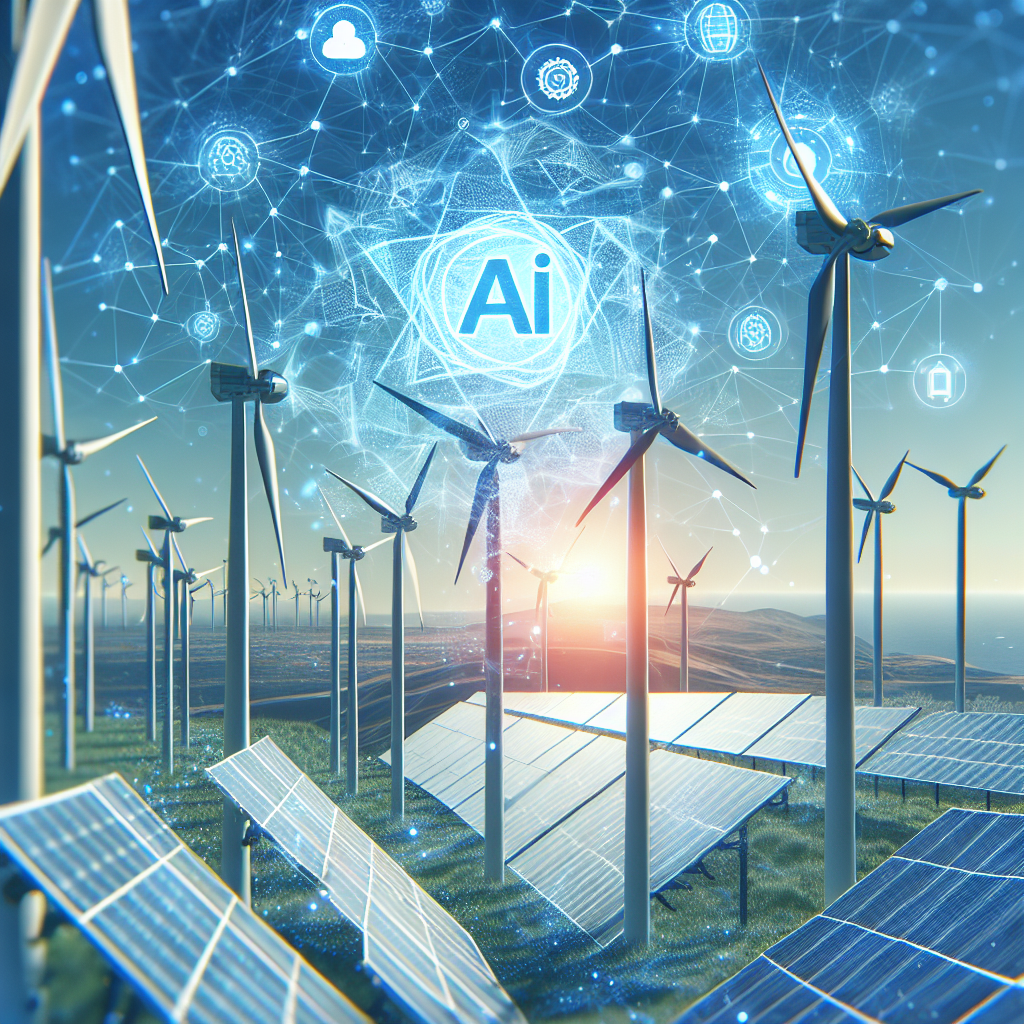Artificial Intelligence (AI) has been transforming various industries, and the energy sector is no exception. AI deployment in energy has the potential to enhance the utilization of renewable energy sources, optimize energy production and distribution, and improve overall efficiency in the sector.
Renewable energy sources such as solar, wind, and hydro power are becoming increasingly important in the transition towards a more sustainable energy system. However, the intermittent nature of these sources poses challenges for energy producers and grid operators. AI can help address these challenges by predicting energy production from renewable sources, optimizing energy storage and distribution, and increasing overall efficiency.
One of the key applications of AI in renewable energy is in predictive maintenance. By analyzing data from sensors and other sources, AI algorithms can predict when equipment such as wind turbines or solar panels are likely to fail, allowing for proactive maintenance to be carried out. This can help to prevent costly downtime and maximize the lifespan of renewable energy infrastructure.
AI can also be used to optimize energy production from renewable sources. By analyzing weather data, energy demand forecasts, and other factors, AI algorithms can determine the most efficient way to generate and distribute energy from renewable sources. This can help to reduce costs, increase energy production, and minimize the environmental impact of energy production.
Another important application of AI in renewable energy is in energy storage. Renewable energy sources often produce energy at times when it is not needed, leading to wastage. AI can help to optimize energy storage systems, such as batteries, to store excess energy when it is generated and release it when it is needed. This can help to maximize the use of renewable energy sources and reduce reliance on fossil fuels.
In addition to these applications, AI can also be used to optimize energy distribution and grid management. By analyzing data from smart meters, sensors, and other sources, AI algorithms can predict energy demand patterns, identify potential grid congestion points, and optimize energy flows to ensure a stable and reliable energy supply. This can help to reduce the risk of blackouts, improve grid resilience, and enable the integration of more renewable energy sources into the energy system.
Overall, AI deployment in energy has the potential to revolutionize the way we produce, distribute, and consume energy. By harnessing the power of AI, we can enhance the utilization of renewable energy sources, optimize energy production and distribution, and improve overall efficiency in the energy sector.
FAQs:
Q: How is AI used in renewable energy production?
A: AI is used in renewable energy production to predict energy production from sources such as solar, wind, and hydro power, optimize energy storage and distribution, and increase overall efficiency.
Q: What are the benefits of using AI in renewable energy?
A: The benefits of using AI in renewable energy include improved predictive maintenance, optimized energy production, increased energy storage efficiency, and better grid management.
Q: How can AI help to reduce the environmental impact of energy production?
A: AI can help to reduce the environmental impact of energy production by optimizing energy production from renewable sources, increasing energy efficiency, and reducing reliance on fossil fuels.
Q: What are some challenges of deploying AI in the energy sector?
A: Some challenges of deploying AI in the energy sector include data privacy concerns, integration with existing infrastructure, and the need for skilled personnel to develop and maintain AI systems.
Q: What is the future of AI deployment in energy?
A: The future of AI deployment in energy is bright, with continued advancements in AI technology expected to revolutionize the way we produce, distribute, and consume energy in a more sustainable and efficient manner.

